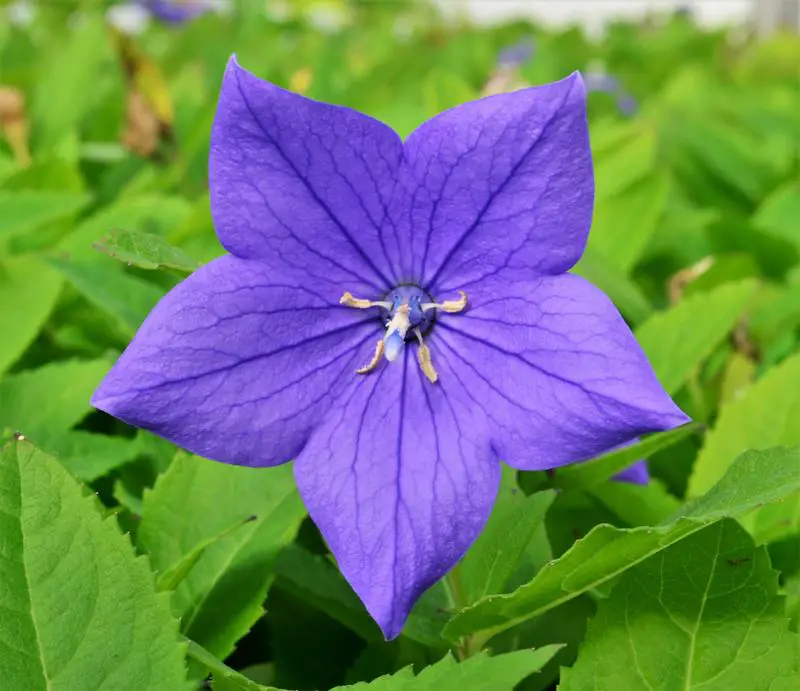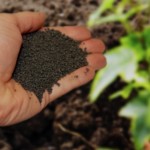Platycodon grandiflorus, commonly known as balloon flower, is a delightful perennial that adds charm to gardens with its unique balloon-like buds and star-shaped blooms. Cultivating and caring for this plant is relatively straightforward, but attention to specific factors such as location, soil, watering, fertilizing, and pruning can contribute to its overall health and beauty. In this comprehensive guide, we’ll explore each aspect in detail to help you grow and care for Platycodon grandiflorus successfully.
1. Location: Selecting the right location is crucial for the optimal growth of balloon flowers. These plants thrive in a sunny to partially shaded environment. Aim for a spot that receives at least six hours of sunlight daily. While they can tolerate partial shade, too much shade may result in reduced flower production. Ensure that the chosen location provides well-draining soil to prevent waterlogging, as balloon flowers are susceptible to root rot.
2. Soil: Platycodon grandiflorus prefers a rich, loamy soil with a slightly acidic to neutral pH. Amending the soil with organic matter, such as compost, can enhance its fertility and structure. Good drainage is essential, so if your soil tends to be heavy or compacted, consider incorporating sand or perlite to improve aeration. This precaution helps prevent waterlogged conditions, fostering a healthier root system.
3. Planting: Plant balloon flowers in the spring or fall, the ideal seasons for most perennial plantings. Space the plants about 12 to 18 inches apart to provide sufficient room for growth and air circulation. When planting, ensure that the root ball is level with the soil surface. Water the plants thoroughly after planting to help them establish roots in their new environment.

4. Watering: Balloon flowers prefer consistently moist soil, especially during the growing season. Regular watering is essential to support their development and promote flower production. However, it’s crucial to strike a balance, as overwatering can lead to root rot. Check the soil moisture regularly, and water when the top inch of soil feels dry. Applying a layer of organic mulch around the base of the plant helps retain soil moisture, suppress weeds, and regulate temperature.
5. Mulching: Mulching is a beneficial practice for balloon flowers. Apply a layer of organic mulch, such as shredded bark or straw, around the base of the plant. Mulch helps retain soil moisture, reducing the frequency of watering. Additionally, it suppresses weed growth, which can compete with the balloon flower for nutrients and water. The mulch also acts as insulation, regulating soil temperature and protecting the plant’s roots.
6. Fertilizing: To support healthy growth and prolific flowering, fertilize your balloon flowers in the spring. Choose a balanced, all-purpose fertilizer and apply it according to the package instructions. While these plants are not heavy feeders, providing the necessary nutrients ensures optimal performance. Be cautious with nitrogen levels, as excessive nitrogen can stimulate lush foliage at the expense of flowers. Regular feeding throughout the growing season will contribute to robust and vibrant plants.
7. Pruning: Pruning plays a crucial role in shaping and maintaining the health of balloon flowers. Pinching back young plants in early summer encourages bushier growth and more abundant flowering. This process involves removing the tips of the stems, which stimulates the development of lateral shoots. As a result, the plant becomes fuller and produces more buds. Deadheading, or removing spent blooms, is another essential pruning task. This not only improves the plant’s appearance but also prolongs the flowering period by redirecting energy from seed production to new bud formation.
8. Support: Taller varieties of Platycodon grandiflorus may benefit from staking, especially in regions prone to strong winds. Provide support for the plants using stakes or other suitable materials to prevent them from flopping over. This is particularly important as the balloon-like buds develop into flowers, adding weight to the stems. Proper support ensures an upright and aesthetically pleasing display in your garden.
9. Winter Care: While balloon flowers are generally hardy, some varieties may benefit from additional protection during the winter months. In colder regions, consider applying a layer of mulch around the base of the plants in the fall. This provides insulation against temperature fluctuations and protects the roots from extreme cold. However, in milder climates, balloon flowers may not require extensive winter care beyond regular maintenance practices.
10. Pests and Diseases: Keep a watchful eye for common pests such as aphids and spider mites. These pests can potentially affect the overall health of balloon flowers by feeding on sap or causing damage to the foliage. If an infestation occurs, promptly treat the plants with insecticidal soap or neem oil. Balloon flowers are generally resistant to most diseases, making them a resilient choice for gardens.
11. Division: Every few years, consider dividing mature balloon flower plants to rejuvenate them and promote better growth. Dividing helps maintain the plant’s vigor by preventing overcrowding and enhancing nutrient uptake. Spring is an ideal time for division, allowing the plants to recover and establish new root systems before the growing season.
12. Container Gardening: For those with limited garden space or those who prefer container gardening, Platycodon grandiflorus can thrive in pots. Choose a well-draining potting mix and ensure that the container has drainage holes to prevent waterlogging. Regular watering is crucial for container-grown plants, as they can dry out more quickly than those in the ground. Fertilize according to the needs of container plants and provide support if growing taller varieties.
By incorporating these guidelines into your care routine, you can enjoy a flourishing display of Platycodon grandiflorus in your garden. Keep in mind that individual care requirements may vary based on local climate, specific cultivars, and soil conditions. Regular observation and adjustments to your care routine will contribute to the long-term health and vitality of your balloon flowers.






